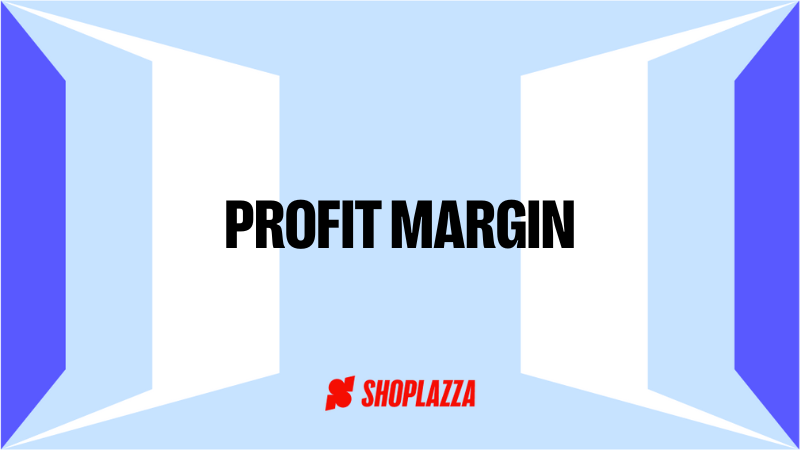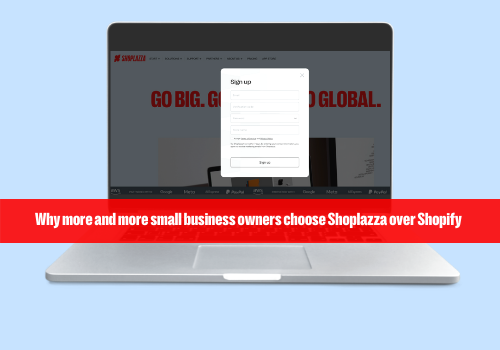
Every entrepreneur worries about making the right decisions, and when it comes to business, hardly any decision does not involve some kind of sacrifice. But how can you tell if a certain investment is worth it? Understanding opportunity cost can empower online business owners like you to make informed choices, seize profitable opportunities, and ultimately thrive in their industry. In this blog post, we’ll explore what opportunity cost is, why it's vital for online businesses, and how to calculate it.
Opportunity is calling. Your new business starts here.
What is opportunity cost?
Opportunity cost refers to the potential benefits a person or business forgoes when choosing one option over another. It’s the value of the next best alternative that is sacrificed in making a decision. In other words, when we decide to allocate resources, time, or effort toward one option, we give up the opportunity to gain from the next best alternative.
What is marginal opportunity cost?
Marginal opportunity cost is like figuring out the extra price you pay when you make a small change in your decisions. It's about understanding how your choices affect what you're giving up. When you decide to do a little more of something, like producing an extra product or spending more time on a task, the marginal opportunity cost shows you what you lose by not using that time or resources for something else. It helps you see the trade-offs of making a bit more of one thing instead of focusing on another.
Marginal opportunity cost and opportunity cost are related concepts, but they focus on slightly different aspects of decision-making.
- Opportunity cost looks at the broader picture and considers the value of the next best alternative forgone when making a decision. It answers the question, "What am I giving up by choosing Option A over Option B?" Opportunity cost considers the total benefits of one choice compared to the total benefits of another choice.
- Marginal opportunity cost, on the other hand, zooms in on the incremental changes or additions to your choices. It deals with the cost of producing or consuming one more unit of something. For example, if you're already producing a certain number of products, marginal opportunity cost helps you understand the cost of producing one additional unit. It's about measuring the impact of small changes on your choices.
To put it simply, opportunity cost looks at the big picture of choosing one option over another, while marginal opportunity cost looks at the specific impact of making a little bit more or a little bit less of something you're already doing.

Why are opportunity costs important for online businesses?
Now that we’ve answered the question “What is opportunity cost?”, it’s time to understand why calculating it can make or break your business.
Resource allocation
We don’t need to tell you that businesses, particularly new ones, need to be careful with where resources are allocated.
Businesses often have limited resources, such as time, money, and staff. Understanding opportunity cost helps you prioritize investments and efforts toward the most lucrative opportunities, avoiding wasteful pursuits.
Risk assessment
Evaluating opportunity cost allows businesses to assess the potential risks associated with each decision. By considering what they could be gaining from alternative choices, entrepreneurs can make well-informed and calculated risks, reducing the likelihood of adverse consequences.
Competitive advantage
Recognizing opportunity cost gives businesses a competitive edge. Being able to identify opportunities that others might overlook or misjudge enables entrepreneurs to stay ahead of the competition and capitalize on emerging trends.
Turn your business smart! Find out all about competitive intelligence. 🧠
Long-term planning
Successful online businesses focus on sustainable growth and long-term planning. Opportunity cost analysis helps in crafting comprehensive strategies that align with the company's goals, leading to steady progress over time.
Learn how to write a business plan for your new online store! 📝
Enhanced decision-making
Online businesses encounter countless decisions every day. By incorporating opportunity cost into their decision-making process, entrepreneurs can make more rational choices that maximize returns and minimize losses.
How to calculate opportunity cost
Calculating opportunity cost involves a systematic process that requires careful consideration of the available alternatives and their potential benefits. Let's break down each step in detail:
1. Identify the decision to be made
Before you can calculate opportunity cost, you need to clearly define the decision you are facing. This could be anything from choosing a new supplier, deciding on a content marketing campaign, or even selecting a software solution for your online business.
Clearly articulating the decision at hand sets the stage for a focused and structured analysis.
2. List the alternatives
Once you've identified the decision, make a list of all the viable alternatives. It's important that each alternative is distinct and exclusive, meaning that selecting one option does not automatically imply selecting another.
Having a comprehensive list of alternatives ensures that you're considering a wide range of possibilities before making a decision.
For instance, if you're deciding on a new marketing strategy, your alternatives might include options like social media advertising, influencer marketing, content marketing, and email marketing.
3. Evaluate potential benefits
With your list of alternatives in place, the next step is to evaluate the potential benefits or returns associated with each option. This evaluation can be based on various metrics depending on the nature of the decision.
For financial decisions, you might consider expected revenue, profit margins, and costs. For non-financial decisions, you could assess factors like time saved, improved efficiency, or enhanced customer experience.
Continuing with the marketing strategy example, you would estimate the potential ROI in terms of sales, leads generated, and brand exposure for each alternative.
4. Compare opportunity costs
This is where the heart of opportunity cost calculation lies. To determine the opportunity cost, you need to compare the potential benefits of the chosen option with those of each alternative. The opportunity cost is the value of the best alternative you are giving up by selecting a particular option.
For each alternative, subtract the potential benefits of that alternative from the potential benefits of the chosen option. The resulting difference represents the opportunity cost associated with that alternative. (Don’t worry; we’ll give you an example later on.)

5. Make an informed decision
After calculating the opportunity costs for each alternative, you're armed with a wealth of information that can guide your decision-making process. By understanding what you're giving up when choosing one option over another, you can make a more informed choice that aligns with your business goals and objectives.
It's important to note that opportunity cost is not the only factor to consider when making decisions. Depending on the situation, you might also weigh other factors such as risks, feasibility, and long-term strategic alignment.
An opportunity cost example
Let's illustrate opportunity cost with a simple example. Imagine an online retailer, "TechGear," is deciding between two marketing strategies for a new product launch:
- Option A: Invest $10,000 in a social media advertising campaign, expecting a return of $30,000 in sales.
- Option B: Allocate $5,000 to influencer marketing, anticipating a return of $20,000 in sales.
Opportunity cost calculation:
Option A's opportunity cost:
$30,000 (potential return from Option B) - $10,000 (investment in Option A) = $20,000
Option B's opportunity cost:
$20,000 (potential return from Option A) - $5,000 (investment in Option B) = $15,000
In this scenario, the opportunity cost of choosing Option A is $20,000, as TechGear would forgo the chance to gain an additional $20,000 in sales by choosing Option B.
Other business costs you should know about
Direct costs
Direct costs in business are the expenses that can be clearly and directly traced to a specific product, project, or activity. These costs are directly tied to producing a particular item or providing a specific service. In other words, they are costs that wouldn't exist if that particular product or activity didn't occur.
Think of direct costs as the expenses that directly contribute to making something. They can include things like raw materials, labor (if it's specific to the project), and any other resources that are used solely for that project or product. These costs can often be easily accounted for and attributed to a specific output.
For instance, if you're running a bakery and you want to calculate the direct costs of producing a batch of cookies, you'd consider the cost of the ingredients (flour, sugar, chocolate chips), the packaging for the cookies, and the wages of the bakers who worked on that specific batch. These costs are directly related to making those cookies.
In a nutshell, direct costs in business are the expenses directly tied to creating a product or delivering a service. They are more straightforward to track and associate with specific activities compared to other types of costs.
Sunk costs
To try to understand what sunk costs are, imagine a company invests a lot of money in developing a new product. After some time, they realize the product isn't selling well and isn't likely to improve. The money they spent on development is a sunk cost. It's money they've already put in, and they can't get it back. Even if they stop producing the product, they can't recover that investment.
Implicit costs
Consider a situation where a business owner uses their own building for their business instead of renting it out. The money they could have earned from renting it out is an implicit cost. It's the opportunity they give up by not using their property for a potentially more profitable purpose.
Explicit costs
If you want to know what an explicit cost is, Imagine a company wants to launch a new website. They have to pay for web development, domain registration, and hosting. These direct payments are explicit costs. They're the clear, measurable expenses that the company needs to shell out money for.
Out-of-pocket costs
In a business context, out-of-pocket costs are the actual cash payments a company makes for various things. For instance, if a business owner pays employees' salaries, buys office supplies, and pays for advertising, these are out-of-pocket costs. It's the real money going out of the business's wallet to cover its operations.
Opportunity cost: conclusion
In conclusion, opportunity cost is a powerful concept that plays a critical role in shaping the decisions and outcomes of online businesses. By recognizing the value of the next best alternative, entrepreneurs can make informed choices, optimize resource allocation, and navigate the competitive landscape with confidence. Calculating opportunity cost provides a structured approach to decision-making, enabling businesses to chart a path toward sustained success.
Embracing opportunity cost as a guiding principle can help your online business thrive in an ever-evolving marketplace, ultimately leading to improved efficiency, increased profitability, and a competitive edge in the digital arena. As online entrepreneurs, it's crucial to recognize that every decision carries an opportunity cost, and by understanding and quantifying it, we can make smarter choices that pave the way for long-term growth and success.
Take your business to the next level. Start your online store today.
Opportunity cost FAQ
Get quick answers to your questions about opportunity cost!
What is an opportunity cost in simple terms?
Opportunity cost in simple terms is the value of what you give up when you choose one thing over another. It's like deciding between two options and understanding what you're missing out on by choosing one option instead of the other. It's the idea that every choice you make has consequences, and you're giving up the benefits of the next best alternative when you make a decision.
What is an example of opportunity cost in business?
Let's imagine you're a small online bakery owner with limited time and resources. You have to decide whether to spend your weekend baking a large order for a corporate event or working on developing a new dessert recipe.
If you choose to focus on the large order for the corporate event, the opportunity cost would be the potential sales and customer feedback you're missing out on by not creating the new dessert recipe. On the other hand, if you decide to work on the new dessert recipe, the opportunity cost would be the revenue and exposure from the corporate event order.
In simple terms, opportunity cost in this scenario is the value of what you're giving up by choosing one option (fulfilling the corporate order) over another (developing the new dessert recipe). It helps you weigh the benefits and drawbacks of your choices and make informed decisions for your bakery business.
How to find opportunity cost?
To find opportunity costs, you need to compare what you gain from your choice with what you give up. It's like thinking about what you're missing out on when you decide to do one thing instead of another. Subtract the benefits of your chosen option from the benefits of the alternative you didn't pick – that's your opportunity cost. It helps you see the value of your decisions and what you're sacrificing.



